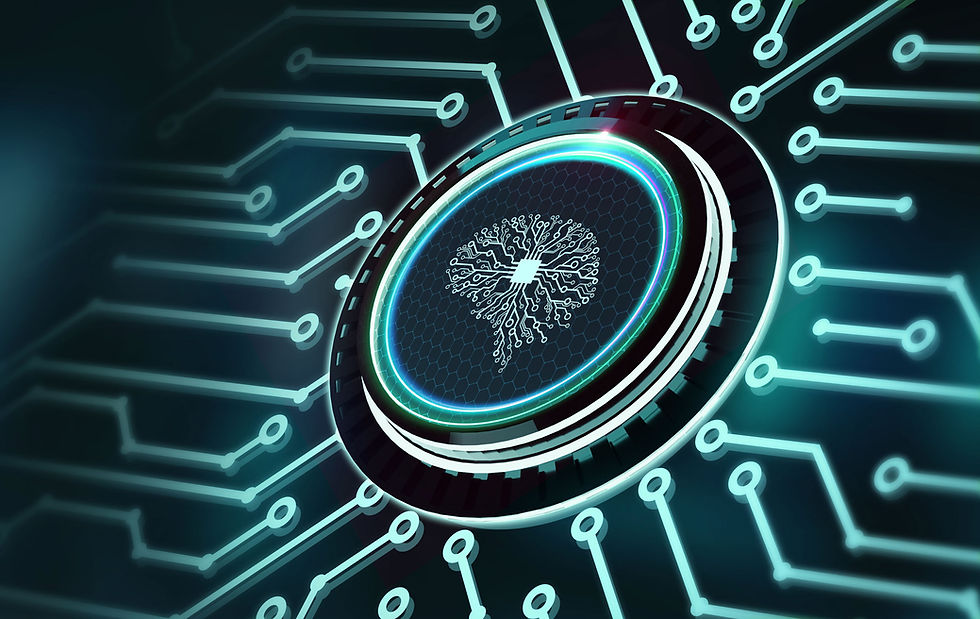D as Deep Learning | ABC of AI
- Hubert Taler
- 7 lip 2024
- 3 minut(y) czytania
To introduce the topic of Deep Learning, or deep learning, it is impossible not to touch on artificial neural networks, on which the whole concept is based.
Neural networks are an artificial information processing system (nowadays 100% software-based - there are no electronic or physical parts) that simulate, to a certain extent, the operation of the human brain. To some extent - that is, they are not a model of the actual structures of the brain, they merely borrow a general operating principle.

Neural networks are not a novelty
Neural networks are not a novelty in computer science. As unidirectional networks (without back propagation), they appeared as early as the 1940s of the 20th century. These were known as perceptrons. As defined by Wikipedia:
The operation of a perceptron is to classify the data appearing at the input and set the output values accordingly.
And this operating principle still applies today to all the neural networks we use. What have perceptrons been able to do? For example, the perceptron created by Frank Rosenblatt and Charles Whightman was trained to recognise alphanumeric characters. This was 1957, mind you!

Since then, neural network structures have become highly complex. One-way networks have been followed by recurrent networks, in which the connections between neurons are a graph with cycles, and other types such as self-organising networks.
Why do we need these networks
Well, exactly why has mankind actually been creating these artificial neural networks for over 80 years? Because of their unique feature: they allow us to solve practical problems without having to formalise them mathematically.
What is it all about? We can, for example, find the relationship between medication administered and the results of treatment, recognise what emotion a photograph of a face expresses, or suggest the most favourable combination of actions in our portfolio, without writing complex equations describing reality. This is all the more so because we are often unable to write such equations - and thanks to neural networks, they 'write' themselves, reflecting the relationships between inputs and outputs in the network.
How is this possible? Well, there are no miracles. We simply have to provide the network with thousands, or tens of thousands, of examples of observational data (to pull a theme from an example: the combination of assets in a portfolio and the financial result), so that after such 'learning', it can solve the next one on its own.
Yes, just like a human, a neural network, it learns by example.
And, in fact, we also explained the title concept of deep learning in passing. This is a method of training a multilayer neural network, without knowing the exact parameters of this learning. This type of method makes it possible to detect complex patterns in the data.

Check! Did deep learning work?
The way in which such a trained network is tested is interesting. An engineer or scientist training such a network, leaves himself a sample of the original data (e.g. 10% of the data), and these are not used to train the network. Once trained, he checks its responses on this sample - the output should reflect the real data as much as possible. Since it works on the real data we have, chances are it will also work on the newly collected data.
This also means, of course, that any irregularities in data collection (e.g. unconscious narrowing of data, so-called data bias), will also make our trained model inadequate for analysing real data. Similarly, these types of systems are also susceptible to deliberate attacks - i.e. deliberate ' data contamination' of the input data.
What to use it for?
Systems based on deep learning are commonly used in speech recognition, image recognition, image classification e.g. for medical purposes, reconstruction of images or other media that are damaged or incomplete. There is also a category of applications of such systems for cyber security purposes (e.g. detecting attacks or unusual behaviour).
Deep learning is with us for good, and is inevitably linked to building neural networks. We use it on a daily basis, whether calling an automated call centre or allowing a smartphone to detect images of landscapes or selfies among the photographs we have taken.




Komentarze